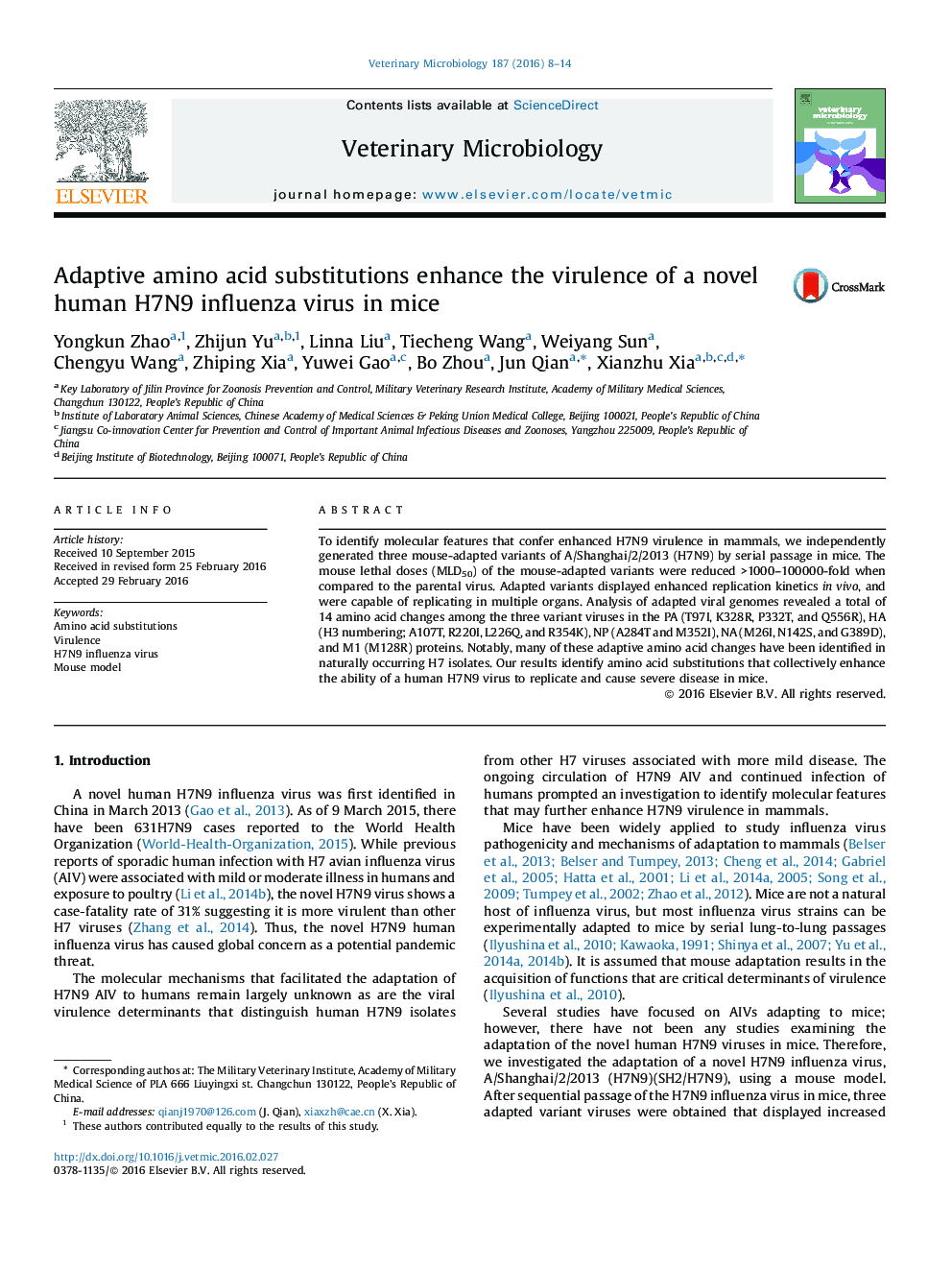| Article ID | Journal | Published Year | Pages | File Type |
|---|---|---|---|---|
| 2466442 | Veterinary Microbiology | 2016 | 7 Pages |
•H7N9 variants displayed enhanced replication in vivo.•H7N9 variants were capable of replicating in multiple organs of infected mice.•Some adaptive mutations were identified in natural H7 isolates.
To identify molecular features that confer enhanced H7N9 virulence in mammals, we independently generated three mouse-adapted variants of A/Shanghai/2/2013 (H7N9) by serial passage in mice. The mouse lethal doses (MLD50) of the mouse-adapted variants were reduced >1000–100000-fold when compared to the parental virus. Adapted variants displayed enhanced replication kinetics in vivo, and were capable of replicating in multiple organs. Analysis of adapted viral genomes revealed a total of 14 amino acid changes among the three variant viruses in the PA (T97I, K328R, P332T, and Q556R), HA (H3 numbering; A107T, R220I, L226Q, and R354K), NP (A284T and M352I), NA (M26I, N142S, and G389D), and M1 (M128R) proteins. Notably, many of these adaptive amino acid changes have been identified in naturally occurring H7 isolates. Our results identify amino acid substitutions that collectively enhance the ability of a human H7N9 virus to replicate and cause severe disease in mice.
